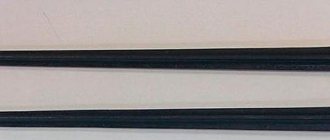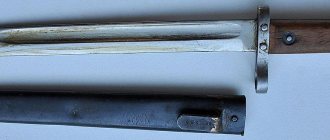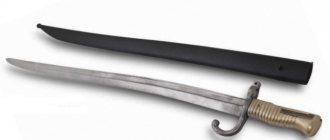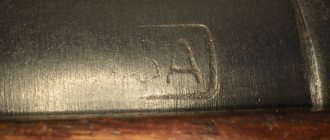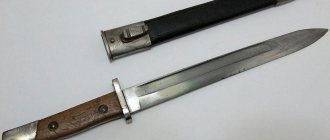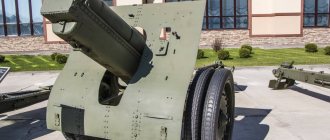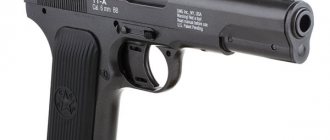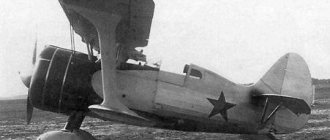The history of the tetrahedral bayonet for the Mosin rifle
The history of the needle tetrahedral bayonet dates back to 1870, when the bayonet was developed for the 1870 Berdan rifle. Already in 1891, this model of bayonet was adopted by the Russian army together with the Mosin rifle. At that time it was considered one of the most dangerous and terrible types of melee weapons. The tetrahedral needle blade was almost half a meter long and inflicted very deep and penetrating wounds, which subsequently led to severe damage to a person’s internal organs. At the same time, the existing small entrance hole did not make it possible to immediately assess on the spot the degree of damage and the depth of penetration of the weapon into the body. All this led to internal bleeding and various infections, which, as a rule, led to peritonitis and, in most cases, death.
An interesting fact is that in the armies of Western Europe the bayonet was considered a weapon of last chance; it was practically not used there and such a thing as a bayonet attack, one might say, did not exist there. Thus, the attachment on the barrel of a musket, which led to the death of the enemy, was used only when the need for self-defense and defense arose. At that time in Russia, in particular in the Soviet Union, the deadly bayonet charge became a real legend. It is not without reason that the great Russian commander Alexander Vasilyevich Suvorov introduced it as a cult, while relegating bullet shooting fired from firearms to the background. Surely, every Russian who is even the least interested in the history of his homeland knows his catchphrase, which says: “The bullet is a fool, but the bayonet is a good man.”
Bayonets for the Mosin rifle lasted almost fifty years, the peak of their popularity came during the revolution and the Civil War. In addition, this bayonet killed a huge number of Nazis on the battlefield during the Great Patriotic War; this type of weapon became a symbol of victory against the Nazi invaders. Soon there was talk of replacing the needle tetrahedral bayonet with bladed bayonets for repeating rifles, but this decision was never made in order to save money. The disadvantages of using a bayonet began to be expressed more and more clearly in conditions of trench warfare, since in a cramped trench a rifle with a bayonet was only a burden and caused a lot of inconvenience. In addition, the bayonet tended to break very often at the most inopportune moments.
Already in the twentieth century, bayonet battles had practically become obsolete, and were quite a rare occurrence; therefore, wearing a bayonet on a weapon became inappropriate. Now the first thing they began to pay attention to was the convenience of the weapon itself, but much less attention was paid to its properties. In 1916, acute problems related to the production of weapons arose throughout the planet, in particular in all warring countries. It is worth noting that in all these countries, combat experience clearly showed that the role of the bayonet in modern combat has dropped significantly, thus the bayonet became unnecessary and, in addition, began to cause a lot of inconvenience. Based on these conclusions, new models began to be produced in Austria-Hungary and Germany, the so-called ersatz bayonets, which were made using very simple technologies and from low-grade steel.
But unlike their predecessors, these new models were much cheaper and more technologically advanced. Russia also began to mass-produce bayonets of the 1916 model; now the bayonet began to provide the ability to inflict circular and slashing blows on the enemy, and when the reverse stroke was carried out, then hit with the side surface of the butt. Accordingly, the piercing properties of the old needle tetrahedral bayonet came to naught. But the advantage of the new weapon was that it was much cheaper and easier to produce, which was extremely necessary in that difficult and difficult time.
If we talk about the dimensions of the very first bayonet of the 1891 model, they were as follows:
- the total length of the weapon was 500 mm;
- blade length 430 mm;
- blade width 17.7 mm.
Interesting Facts
Initially, the word “bayonet” in the Russian language acted as a synecdoche, carrying the meaning of the combination “infantry fighter.” Roughly speaking, soldiers were counted by their weapons and vice versa. A similar technique was used when counting in the cavalry, with the difference that they talked about sabers.
Today, the tetrahedral needle bayonet is no longer in service. Classic flat and removable options are used. It also acts as a ceremonial weapon for honor guard companies on public holidays and parade-ground concerts as part of parades on Red Square.
The prototype of the bayonet knife can be called the biginet, which appeared in the middle of the 17th century. It was a knife with a modified handle. Baginet was used in hunting, when the need arose to finish off a shot animal. Since it was inconvenient to carry a pike or pole with you, a baguinet was inserted into the barrel of a gun, using its length for safety, and finished off the animal. This is the first case known to historians of the joint use of firearms and bladed weapons.
The appearance of the bayonet in the Russian Empire is attributed to Peter I and his reforms. Inspired by military discipline in Europe, he decided to introduce some “new things” in his home country.
Bayonet knife Mosin model 1927
The 1927 bayonet knife sample represents the first Finnish bayonet knife that was produced in-house. Its appearance is visually reminiscent of the Italian model 1891 bayonet knife that went with the Mannlicher-Carcano rifle. As a rule, the 1927 bayonet knife was used for the 1927 Mosin rifle, as well as its subsequent modifications.
Finnish models of 1927, in general, went through two stages of modernization. The first stage occurred in 1929, when changes were made to the principle of fastening the blade to the handle. These changes had absolutely no effect on the appearance of the weapon. Almost at the same time, changes were also made to the rules for sharpening the combat end of the wedge. Six years later, in 1935, it was decided to add a special hole in the handle, which was intended for cleaning the groove channel. In the very first years, when bayonet knives began to be produced, their sheaths were blued and had stiffening ribs. The period 1936-1938 saw the introduction of a new type of scabbard; instead of a hook, a smooth one with a round peg appeared.
Finnish bayonet knives have the following main characteristics:
- single-edged blade with fullers on both sides;
- the handle is formed by two wooden cheeks, which are attached to the shank with two rivets;
- the head of the handle has a T-shaped groove, as well as a spring latch with an internal coil spring;
- the crosspiece has a slightly bent forward end and a ring for the barrel, located on the side of the butt of the blade;
- The sheath is made of steel, has a ribbed surface, a hook and a ball at the end.
Such Finnish knives are usually marked with manufacturer's stamps. The stamp is located on the heel of the blade. In addition, a special number is applied to the back of the bayonet, which corresponds to the number of the rifle for which it was assigned. Sometimes you can find 1927 model bayonets with markings corresponding to the Finnish People's Guard. The total length of this sample bayonet knife is 410 mm, blade length 300 mm, blade width 23 mm, internal diameter of the ring in the crosspiece 16.2 mm.
Advantages of Finnish bayonet knives of the first half of the 20th century
Finland is rightfully considered an economic and everyday country, therefore piercing and cutting weapons were made here mainly for the purpose that they could be used not only on the battlefield, but also in everyday life. In those days when Finland bordered Russia and, in particular, the Soviet Union, domestic production was never able to create a normal bayonet knife for the Mosin rifle. Finland did this for him, and instead of a tetrahedral needle bayonet, in 1928 an improved bayonet was created - a knife, which had the properties of both stabbing and cutting.
The most basic advantages and advantages of Finnish bayonets were that they were easy to handle; they could easily inflict a piercing wound, cut, stab and even chop. At the same time, in most countries, nothing more could be done other than a stabbing wound with a bayonet. In addition, another very important advantage of Finnish knives was that they could be used without rifles, for example, if a situation arose when it was necessary to silently remove a sentry.
It is worth noting that Finnish bayonet knives also had such properties as high strength and excellent balancing, which led to an amazing result; it became possible to use them as throwing weapons. Already in 1930, the bayonet knife was modernized and became double-edged, while its handle began to be made of wood, namely, Karelian birch. As for the length of the blade, it became constant and strict, amounting to 300 mm, width - 23 mm. This bayonet knife pierced the enemy’s body like butter and left him practically no chance of survival.
If we talk about rare examples of Finnish bayonet knives produced in the first half of the 20th century, just during the Second World War, then a striking example is the M42 bayonet knife, which was released in 1942. Only about 150 of these models were manufactured and released; they were produced mainly for officers and sabotage units. This bayonet knife was made of blued steel and fit perfectly on a Mosin rifle. This example is single-edged, but perfectly sharpened and made it possible to literally cut the enemy during a powerful blow. The handle of the bayonet knife has a composite design, that is, it consists of steel and Karelian birch, which are firmly and reliably attached to each other. Usually it was polished to an incredible shine and, in general, this example of a bayonet knife was a very strong and formidable weapon.
Features of the 1939 model bayonet knife for the 1939 Mosin rifle
Towards the end of the 1930s, another modernization of the small arms of the People's Guard and the Finnish army was carried out. At this time, it was decided to develop a completely new model of the bayonet, which could perfectly combine all the basic qualities of a bayonet and a combat knife. Ultimately, the 1939 bayonet knife model was adopted, which in the shape of its blade is very similar to the Finnish pukko knife. These bayonet models were produced and produced for almost two years from 1941 until almost the second half of 1942.
The main feature of this knife bayonet was that it could be applied not only to the 1939 Mosin People's Guard rifle, but also to the 1928 and 1928-30 People's Guard rifles. In addition, these knives were widely used for military rifles of the Mosin system of 1927. According to statistics, the Mosin bayonet knife model 1939 was produced in 10,000 copies, but they say that most of them were deliberately destroyed in the 1970s, just after they were withdrawn from service.
The main characteristics of this model of bayonet knife include:
- a single-edged blade with narrow valleys on both sides running along the butt;
- the bayonet handle is formed by a U-shaped wooden plate, which is fastened to the shank with two screws;
- the handle head has a T-shaped slot and an internal latch where the coil spring is located in the internal location;
- in addition, there is also a special hole in the head of the handle, which facilitates easy cleaning of the groove channel;
- the crosspiece has a short and forward-curved end, as well as a ring for the barrel on the side of the blade butt;
- The sheath is leather and has a metal tip.
As for the marking of the bayonet, it consists of the abbreviation of the People's Guard, is located on the heel of the blade and is duplicated near the mouth of the sheath. In addition, the company stamp is also fixed on the sheath and heel of the blade - read 6476 times
